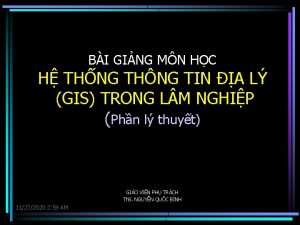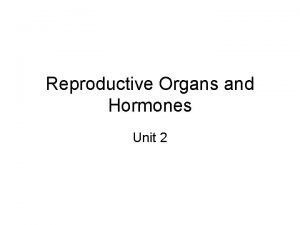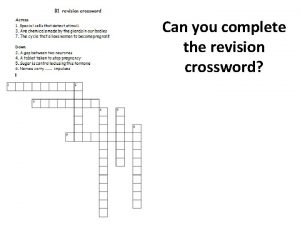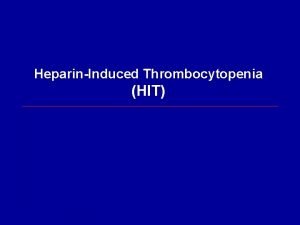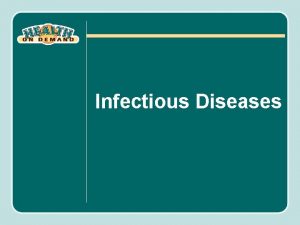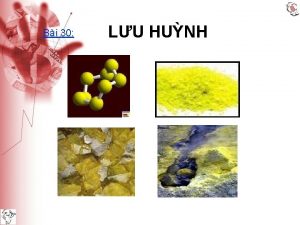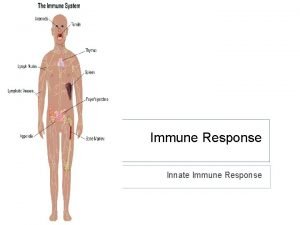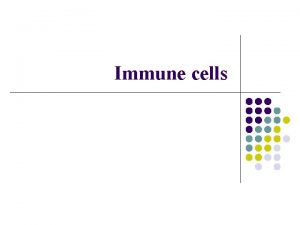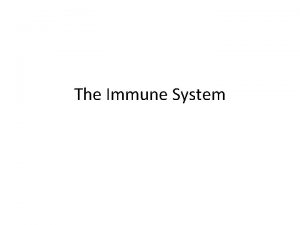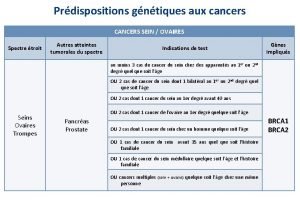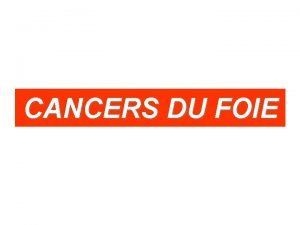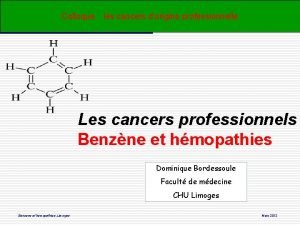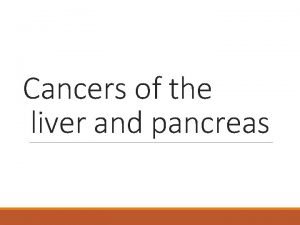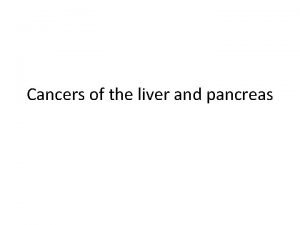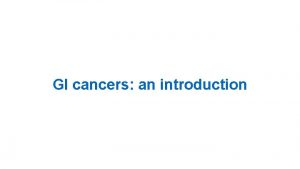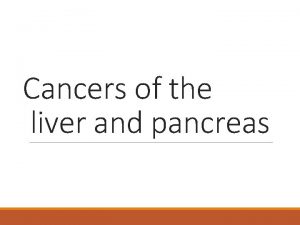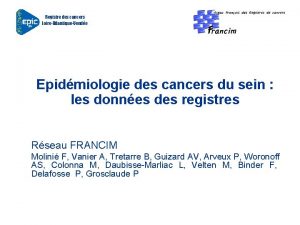IMMUNE CHECPOINTS IMMUNOTHERAPY IN CANCERS HUNH QUYT THNG






















- Slides: 22

IMMUNE CHECPOINTS & IMMUNOTHERAPY IN CANCERS HUỲNH QUYẾT THẮNG VIETNAM CANCER SOCIETY

INHIBITORY IMMUNE CHECKPOINTS IN CANCERS Immune checkpoint • Negative regulators of immune system • Maintaining selftolerence • Preventing autoimmunity • Blocking immune checkpoint is a promising approach for activating antitumor immunity. It reactivate the autoimmunity

The immune checkpoint proteins in immune cycle

CTLA-4

CTLA-4: Cytotoxic T lymphocyte associated protein 4 FUNCTIONAL STRUCTURE: • Known as CD 152, an homolog of CD 28 • Functioning as an IC, down regulating immune responses • Both bind with CD 80 & CD 86 (also called B 7 -1 & B 7 -2): ON & OFF switches on APC FUNTIONAL STRUCTURE OF IMMUNE CHECKPOINT CTLA-4

FUNCTIONS • • Member of Ig. superfamily, expressed by activated T. cell and transmits a negative signal to T cell (reverse to CD 28) CTLA 4 binds to CD 80 &86 with greater affinity & avidity than CD 28 → out-compete for its ligands Also found in regulator T cell, contributing to inh. Function. Activating of T cell leads to increase expression of CTLA 4: Functional structure

FUNCTIONS (cont. ): • • Mechanistically, CTLA 4 recruits a Phosphatase for TCR →attenuating signal Recent suggests in vivo: CTLA 4 capture & remove B 7 -1&2 from APC → unavailable trigger CD 28. DC -Treg interaction→ sequestration of Fasin-1, essential for synapse formation and skew fascin 1 -dependent actin polarization in AP(D)C → adhesion zone → reduced T cell priming. Also function via modulation of cell motility &/or signaling through PI 3 kinase. CTLA 4 &homolog. CD 28 bind to B 7 1 và 2

CTLA 4: T. Cell motility appears to give evidence for the so-called: “Reverse stop signaling model”from TCR. CTLA 4 reverses “TCR induced stop signal”, for firm contact between Tc & APC

CTLA 4 STRUCTURALLY: • Extracellular domains , transmembrane & cytoplasmic tail. • Alternative splice variant, encoding different isoforms, have been characterized by a disulfide bond, while the soluble isoform functions as monomer • The intracellular domain ia similar to CD 28: No intrincic catalytic activity, contains YVKM motif binding PI 3 K; PP 2 A & SHP 2 & one proline rich motif binding SH 3 containing protein KEY ROLES: • Inhibit T cell responses • Affect signaling, via competing with CD 28 • Also binds PI 3 K

CLINICAL SIGNIFICANCE • Variants in this gene associated with: Diabetis I, Grave’s disease, Hashimoto, SLE • Polymorphism of CTLA 4 are associated with: Autoimmune diseases • Germline Haploinsufficiency CHAI’s disease • Clinical and laboratory manifestation Abnormalities of immune system: - Agonist to reduce immune activity: Potential therapy for autoimmune disease. - Antagonist to increase immune activities: possible : Potential therapeutic against cancers

CLINICAL SIGNIFICANCE OF CTLA 4

BLOCKADE OF CTLA 4 AND CANCERS • Antibody againts CTLA 4 (Ipilimumab) treat melanoma 2011 • Tremelimumab (not yet approved • Antigen specific activating T CD 4+ is the key initiation of adaptive immunity. • The native T cell require 2 signals: - Antigen specific interact TCR with MHC - Co-stimulator, arisen through the surface of CD 28, stimulate the interaction with B 7 on APC

PD-1/PDL 1 -2

PD-1: Programmed cell death Protein 1, also known as CD 279 • Cell surface receptor, downregulates the immune system, promoting “self tolerence” • An IC and guards against autoimmunity via a dual mechanism: promoting apoptosis in antigen specific T cell; Reducing apoptosis in regulatory T cells. • A new class of drug blocking PD-1: activates the immune system to attack the tumor → to treat some cancers

PD-1 • • • Structure • Membrane protein of 286 AA. Member of extended CD 28/CTLA 4 family of T cell regulators Includes an extra cellular Ig. V domain, transmembrane & intracellular tail containing two phosphorylation sites located on inhibitory motifs, suggesting that PD-1 negatively regulates TCR signals PD-1 is expressed on surface of T cell, B cell & macrophage

• PD-1 has two ligands, PDL 1 & PD-L 2, members of family B 7 • Protein PD-L 1 upregulates on marcrophage & DC in response to LPC, GM-CFS treatment; on T cell, BC & TC Receptors signaling. • PD-L 1 is expressed on almost all murine tumors cell lines: PA 1, P 815, B 16 • PD-L 2 expression is more restricted, expressed mainly on DC and a few tumor lines. PD-1: PD-Ligands

FUNCTION OF PD-1 • Protein PD-1 in humans encoded by PDCD 1, a cell surface receptor of Ig superfamilty, expressed on T cell & Pre-B, binds two ligands PD-L 1 và PD-L 2 • PD-1 & ligand negatively regulate immune responses: PD 1 develops glomerulonephritis on knockout mice; cardiomyopathy on C 57 BL/6 & BALB/c bacgrounds. In vitro, treatment of anti-CD 3, stimulated T. cell by PD-L 1 Ig, result in decrease of T cell proliferation và IGF-γ secretion. • It’s suggested that Tcell CD 8+ is more susceptible to inhibition by PD-L 1. • PD-L 1 – PD-1 interaction inhibits activation, expansion & acquisition of effector function of virus-specific CD 8+, which can be reversed by blocking PD-1/PD-L 1 interaction.

MECHANISMS OF ACTIVITIES FOR CTLA 4 &PD-1 • CTLA negatively regulates the antitumor immunity, PD-1 is explored as a target of immunotherapy. • The expressed PD-L 1 on tumor cell inhibits the antitumor activity of PD -1 on effector T cell. • Initiation of PD-1 via PDL 1 leads to production IL-10 → T CD 4

• • CLINICAL SIGNIFICANCE • PD-L 1 highly expresses in cancers, PD-1 has the crucial role in immune evasion. CANCER • Inhibitory interaction between PD-1 and The combination of PDPD-L 1 blocks the immunity control. 1 & CTLA 4 A. bodies has • Combining TLA 4 and PD-1 antibodies is been shown to be more an striking inhibitory immune checkpoint effective than either A. body alone. PD-1 A. B reactivates the ability of CD 8 Tcell to lyse cancer cell PD-L 1 expression is not absolute determinant of therapy effectiveness FDA has approved a combination Nivolumab & Ipilimumab 10/2015

ANTI - PD-1 THERAPY • A number of cancer immunotherapy targeting PD-1 receptor has been developed: Nivolumab (opdivo-BMS) produced complete/partial responses in NSCLC, melanoma, renal-cell cancer, colon and pancreatic cancer did’nt have response • Nivolumab targets PD-1 receptor was approved in Japan on 7/2014 & on 12/2014 in USA-FDA to treat metastatic melanoma. • Pembrolizumab (Keytruda. MK 3475 Merck) also targeting PD-1 receptor, was approved by FDA on 10/2015 for NSCLC progressed after other treatments. • Other drugs targeting PD-1: Pilidizumab (Cure Tech), BMS 936559. • Atezolizumab (MPDL 3280 A Roche), Avelumab (Merck…) target PD-L 1.

FUTURE PROSPECTS • The clinical successes have • The exploration of i. Cs bring two opened up a new area of chalenges: therapeutic: the FDA approval 1. Definition of potential bioof anti-CTLA 4 , quickly followed markers that can determine by anti-PD-1 therapy. which IC pathway dominate in • A new found awareness of particular tumor is inhibitor of potential antitumor activity of choice? Is this possible that patient’s endogenous immune specific oncogenic pathway as systemự once the BRAKE have PI 3 K-AKT hay STAT 3 may induce been released have clarified the and can be used as surrogate role of ICs (determined by biomarker? genetic & biologicalanalyses ) in 2. The clinical development of immune responses, specially in combinational approaches: different levels. Vaccin associated with anti-IC ?

CONCLUSIONS • Clinical results CTLA 4 & PD-1/PD-L 1 inhibitors suggests that B 7 -H 1/PD-1 pathway is an important target for the effective antitumor immune response. • Favor and toxicity profile of PD-1 & B 7 -H 1 inhibitors verify that the large usefullness for the treatment of advanced cancers. • The possible prolongation of response for the inhibition of PD-1 & CTLA 4 pathways until 10 years, leading to extend globally the clinical trials on the spectrum of solid tumors • Many other complex approaches include blokade of immune checkpoints associated with new vaccine, Angiogenesis, MAPK inhibiting targeted therapy.
 Primary immune response and secondary immune response
Primary immune response and secondary immune response Thng
Thng S; hunh
S; hunh S; hunh
S; hunh Immunotherapy for pots
Immunotherapy for pots How to draw a motor bike
How to draw a motor bike Delmovate
Delmovate Female reproductive cancers
Female reproductive cancers Her2 positive cancers
Her2 positive cancers Biosimilar study
Biosimilar study Innate immunity first line of defense
Innate immunity first line of defense Pharyngeal tonsils
Pharyngeal tonsils Unsaturated alcohol crossword clue
Unsaturated alcohol crossword clue Immune system lymph nodes
Immune system lymph nodes Ap bio immune system
Ap bio immune system Hit heparin
Hit heparin Immune reconstitution therapy
Immune reconstitution therapy Third line of defense immune system
Third line of defense immune system Immune
Immune Lymphatic vs immune system
Lymphatic vs immune system Defination of immune system
Defination of immune system Immune checkpoint inhibitors mechanism of action
Immune checkpoint inhibitors mechanism of action Chapter 35 immune system and disease
Chapter 35 immune system and disease

